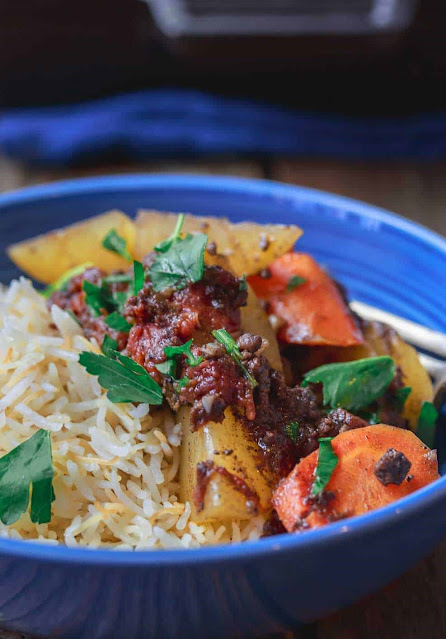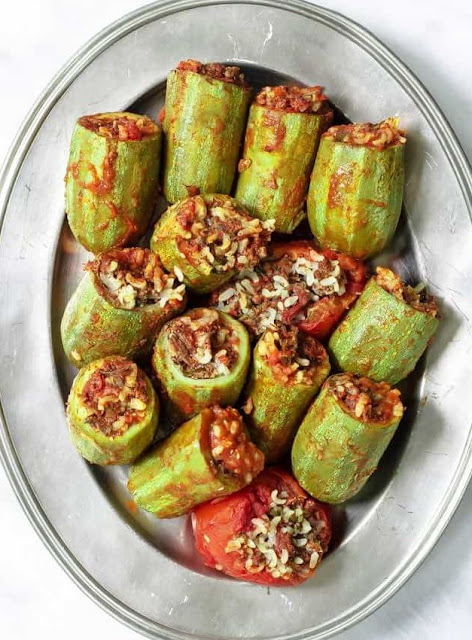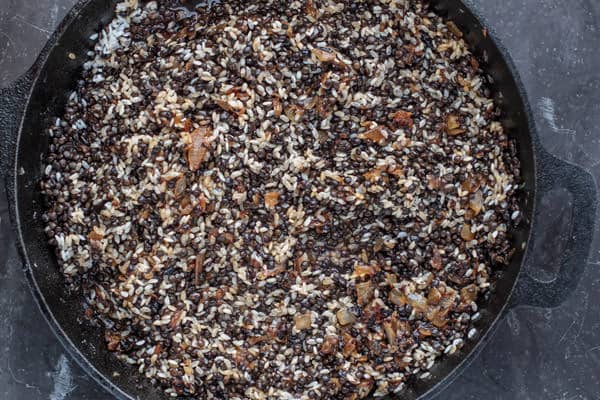Potato wedges are combined with carrots and bell peppers, then topped with a spiced meat sauce and baked until all get crispy.
- 2 tbsp extra virgin olive oil
- 1 cup chopped yellow onion
- 3 garlic cloves, minced
- 1 lb lean organic ground beef or lamb
- 1/2 tsp ground cinnamon
- 1/2 tsp powder ginger
- 1/2 tsp turmeric
- 1/2 tsp powder ginger
- 1/2 tsp turmeric
- 1 tsp cumin
- 1 1/2 tsp coriander
- 1/2 tsp sweet or hot paprika
- Salt and pepper
- 1 28-oz can peeled tomato
- 1/2 cup water
For Potatoes
INSTRUCTIONS
- Heat oven to 375 degrees F.
- To make the meat sauce, in a large non-stick skillet, heat 2 tbsp extra virgin olive oil. Add chopped onions and cook, tossing regularly, till translucent. Add garlic and cook for another 30 seconds or so.
- Add the ground meat (lean beef or turkey), break it up using a wooden spoon. Season with spices, salt and pepper. Cook, stirring regularly, until fully browned. Now add the peeled tomatoes and water. Using your wooden spoon, smash or break up the tomatoes a bit. Bring to a boil, then lower heat, cover and let the meat sauce simmer for 10 minutes. Check to see if you might like to add a little more water. Taste and adjust salt and pepper.
- In a 9" x 13" baking, arrange the potato wedges, carrots, and bell peppers. Season with salt and pepper. Sprinkle allspice and coriander. Toss to combine. Add about 3/4 cup water, then top with the meat sauce.
- Cover the baking pan with foil and bake in heated oven for 30 minutes or so. Uncover and bake for another 10 to 15 minutes on 450 F or until potatoes are golden. Remove from oven and top with fresh chopped parsley.
- To serve, add a side of rice, if you like.























